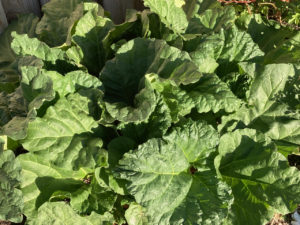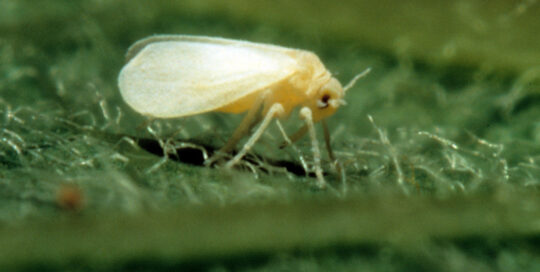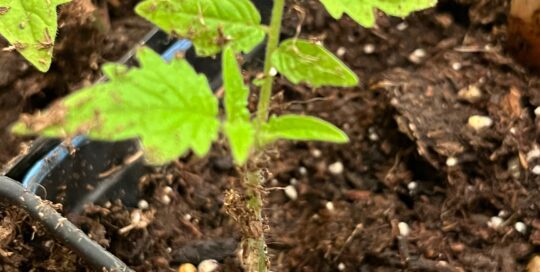What are Those Spots on the Rhubarb Leaves?
Views: 2024

Rhubarb is typically one of those plants that you put in the ground and simply harvest. But even this tenacious perennial has its moments. If your rhubarb suddenly has spots on it, or isn’t thriving, there are a couple of reasons why this might be happening.
Two issues that cause spots on the rhubarb leaves
This weekend I was invited to give a garden talk to a group at the Lewis and Clark County Library in Augusta, Montana as a fundraiser for the local community gardens. During our discussion that went down the proverbial rabbit hole of all things gardening, a friend told me that each year she has spots on her rhubarb leaves. I’ve never had that issue so I told her I would dig into it.
It turns out that there are several fungal diseases that might cause fights and rhubarb leaves. The first one is Ramularia leaf spot, which starts out as small red spots on the leaves that gradually grow to round, tan lesions over a half-inch in diameter. Sometimes the larger ones will also have that halo appearance around them. This infection will also typically move to the stalk.
The second possibility is Ascochyta leaf spot. The first signs of this fungal infection are irregularly shaped lesions that are less than a half an inch in diameter and are more of a greenish yellow. As it progresses there will be a reddish area in the center that will appear with a lighter halo on the outer edge. The difference between a Ascochyta leaf spot and Rumalaria is Ascochyta does not affect the stalk.
More potential reasons for spots on rhubarb leaves
If the leaves of the rhubarb look like there are water-soaked spots on them, it could be Anthracnose Stalk Rot. This will typically also make the leaves wilt and die.
There are times when the plant simply does not thrive or seems to fail from the ground up. In this situation it might mean the presence of Botrytis, yet another fungus. This, too, might exhibit that water soaked look on the leaves — and possibly the stalk. Also called gray mold, in the right conditions it does develop a fuzzy appearance.
How to keep fungus from happening
The prime conditions for any of these infections involve dampness or a lack of air circulation. This is puzzling since here in Montana we have notoriously dry conditions. Even when we do receive rain, the moisture doesn’t seem to stick around for long. But I suppose in the right situation, it can be just enough to perpetuate these problems.
One of the best ways to deal with a fungal infection is to initially remove any of the leaves that are affected. Dispose of them in the trash instead of the compost pile. If other leaves are unaffected, it might be proactive to utilize a copper fungicide to head off the potential spread.
If these issues are a problem here after year, the first step should be clearing away any of the dead leaves in the fall. And removing any other debris from around the rhubarb plant. If that fails to resolve the issue, consider moving the plant to a different location with plenty of sun and well-drained soil. And keep in mind that even though it seems like you put rhubarb in one spot and just leave it there. It does the best when it is moved every decade or so. This doesn’t mean your rhubarb will not produce if you don’t divide it, it just doesn’t thrive as well.
Moving rhubarb
Although I haven’t had the fungal issues with our rhubarb, which I called the entity, I think this year will be a good year to divide at least one of the plants and moving to a new location. Normally I am harvesting by now, yet for some reason it is a bit sluggish this year. A new start might be just what it needs.
Meet Amy Grisak
Amy is a freelance author and photographer in Great Falls, MT who specializes in gardening, foods, and sustainable agriculture. She provides information on every kind…
Amy's Recent Posts

Watch Out for Silverleaf Whiteflies








